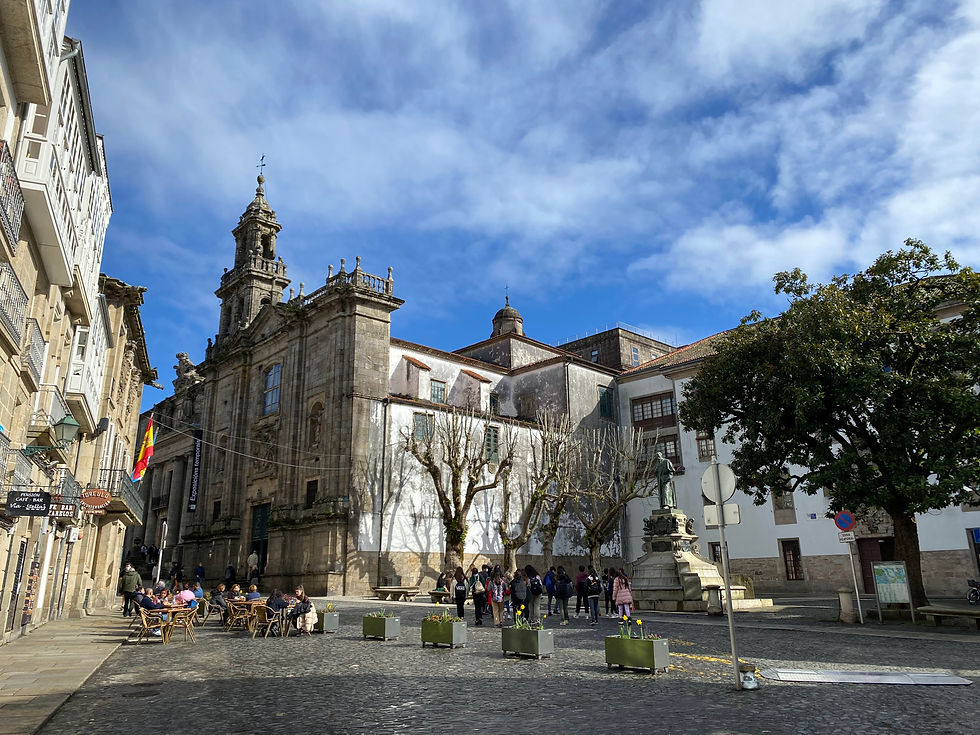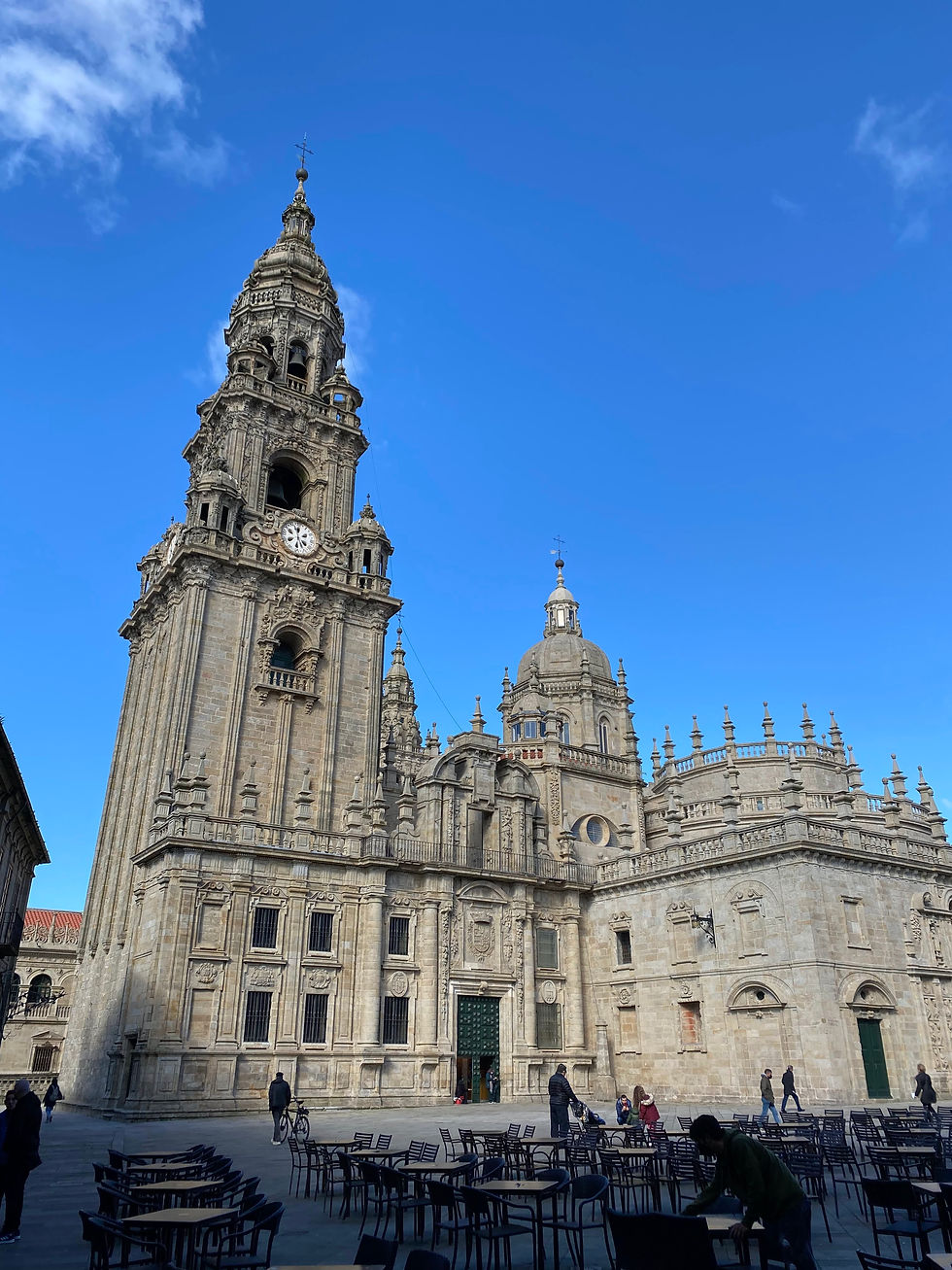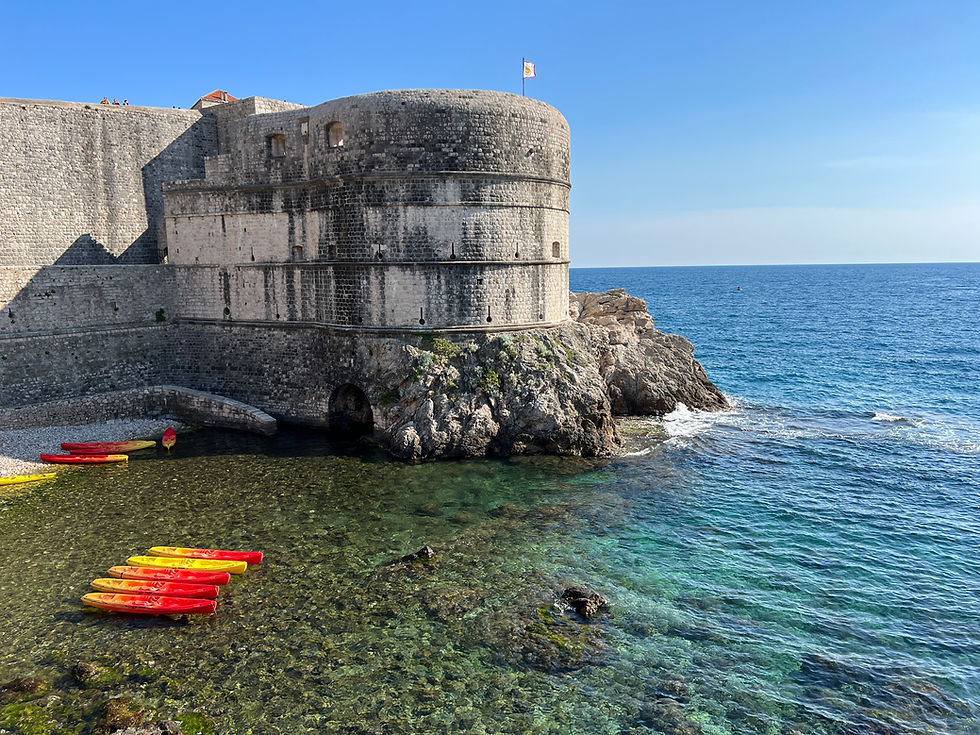Santiago de Compostela Travel Guide: Cathedral, Old Town & Camino History
- Will Gerson
- Aug 23
- 4 min read
Updated: Nov 20
As the endpoint of Europe’s most famous pilgrimage, Santiago de Compostela occupies a central role in the history of Christianity. Since the early 9th century, when a shepherd noticed a bright light shining over an abandoned Roman tomb in the forest and subsequently discovered the remains of the apostle Saint James the Great buried within, pilgrims have flocked to the city along the network of trails known as the Camino de Santiago (‘The Way of Saint James’) that stretch across western Europe.

But this city isn’t just for the faithful—apart from its spiritual significance, it also offers a fascinating mix of history, architecture, and culinary delights. Tucked away in the far northwestern region of Galicia, the town was completely destroyed by Muslim conquerors in the 10th century; the Christians immediately set about rebuilding it, and the place became a symbol of their struggle to reconquer the land. Today, the town boasts a historic center that retains its medieval character with an eclectic mix of Romanesque, Gothic, Renaissance, and Baroque buildings along its narrow pedestrian streets, as well as an active nightlife scene bolstered by its large student population.

Read on for a guide to exploring a zona vella (the old town).
Catedral de Santiago de Compostela
The city’s cathedral is built on the site where the shepherd Pelagius the Hermit discovered Saint James the Great’s remains. Pelagius informed the local bishop, who in turn informed the king, Alfonso II of Asturias, who ordered that a chapel be built on the site of the tomb. The chapel developed into a church before being destroyed by Almanzor, ruler of the Caliphate of Córdoba, who led the Umayyads into the far northern reaches of Iberia.

Construction of the cathedral you see today began in the late 11th century, but the numerous facades were built at different points throughout history. The oldest facade fronts on the Praza das Praterías, while the most iconic is the one on the Praza do Obradoiro, with its soaring, 18th-century Baroque towers representing one of the most famous landmarks in Spain. This Baroque facade was built over the Pórtico da Gloria, the original entrance to the church that marked the end of the pilgrims’ journey, in order to protect it from deteriorating in the heavy Galician rains.

The cathedral is considered a masterpiece of religious architecture not only for its beautiful architecture but also for the way in which its design adapted to the constraints of its status as a holy shrine, with countless pilgrims descending on it daily. For example, the wide aisles on either side of the nave allow for freer movement of worshippers, while the large ambulatory with numerous smaller chapels leading off it helps to avoid congestion around the ornate gold altar. In addition, the famous Botafumeiro, the massive, silver-plated incense burner hanging in front of the altar from the cathedral’s dome and swung back and forth by pulleys to disperse incense during ceremonies, had the added benefit of masking the smell of body odor emanating from the pilgrims who had spent months traveling on the camino.

Hostal dos Reis Católicos
Just next to the cathedral on the Praza do Obradoiro, the Hostal dos Reis Católicos was founded by Fernando and Isabel, the Catholic Monarchs of newly unified Spain, after they completed their own pilgrimage to the city. The Hostal was established to provide food, lodging, and medical care to pilgrims arriving in the city, serving as a place for them to recover from their long journey free of charge.

In the 1950s, Francisco Franco, dictator of Spain, decided to convert the beautiful building into a luxury hotel, moving the hospital facilities to a new location not far away. The hotel is now part of the state-owned Paradores de Turismo network, which operates hotels in historic buildings across Spain. I highly recommend going for a coffee inside, as you will have the chance to explore some of the fabulous interior and grounds.

Mosteiro de San Martiño Pinario
Next to the cathedral and the Hostal, San Martiño Pinario is the second largest monastery in Spain (after the Monasterio de El Escorial in the mountains outside Madrid). Opened by the Benedictines at the end of the 9th century, the monastery grew to become the most powerful in Galicia, exercising a great degree of influence over the kingdom. The buildings you see here today date mostly from the 16th century, when the complex was almost completely rebuilt to reflect the wealth and power it had accrued.

Praza da Quintana
This plaza, located behind the cathedral’s apse, is often used as a public space for different events in the city. The plaza is divided by a staircase, with the lower section referred to as ‘Praza da Quintana de Mortos,’ as it was formerly the site of a cemetery, and the upper section referred to as ‘Praza da Quintana de Vivos’ in juxtaposition.

Food
For a bite to eat in the old town, I highly recommend Bar La Tita, with a wide and cheap selection of tapas and Galician specialties. These are best washed down with a glass of Estrella Galicia, the regional beer brewed in A Coruña that is arguably the best in Spain.
Looking for more places to explore in the region? Visit our Galicia page here.



